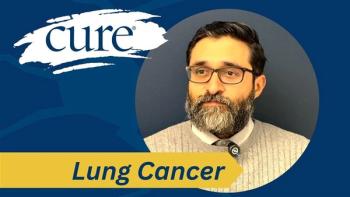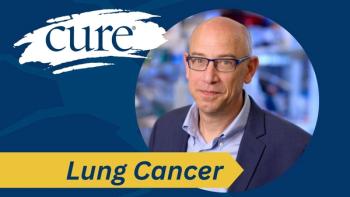
An Expert Offers Advice on How to Incorporate Exercise Into Your Daily Routine
In an interview with CURE, Lutheran Medical Center oncology patient navigator Laurie Hatch explains the best ways for patients with cancer and survivors to restart their exercise routine and the best ways to get moving again and combat side effects from treatment like fatigue.
It’s widely understood that exercise is beneficial for patients with cancer and survivors. But where does one begin, when even walking or balancing can be difficult?
In a recent interview with CURE®, Lutheran Medical Center oncology patient navigator Laurie Hatch, RD, CSO, explained the best way to begin is by speaking with your doctor and starting “low and slow”.
For patients who are in active treatment, Hatch, who also holds a specialist credential in oncology, recommends a goal of 20 minutes per day of exercise, such as walking. Post-treatment, the recommended 150 minutes per week is easier to achieve when you set smaller goals, starting with just 10 minutes a day, said Hatch. The key is banishing the thought of “exercise” needing to be a full production and to view all movement as good movement.
Lastly, Hatch offered some tips on what questions patients and survivors can ask their healthcare providers to determine if they’re ready to exercise and where to look for other resources like fitness trainers with oncology experience.
Transcription:
Some activity or movement is better than nothing. And the more you can do, the better it is, especially when you're a survivor.
I think when you're in treatment, those exercise recommendations are going to be closer to 20 minutes a day. I call it an out and back, walk 10 minutes out 10 minutes back. But when you get into survivorship, it's 150 minutes per week of active, moderate aerobic exercise, and two other times during the week, resistance or strength training exercises.
I think just setting a very finite goal of how much I want to do in one day (is important). Probably no more than 10 minutes, to get started, once you've completed active treatment. That's a good goal. Ten minutes is a long time when you're trying to do balance and aerobic training, and then slowly moving that up.
I think it's very valuable to get with a real person that can train you. I think the exercise trainers have the best idea to assess where a person is: are their legs strong enough to get out of a chair, is their core strong enough to sustain a 10-minute walk? How is their arm strength? If you have lymphedema, you may not be able to do the exercises with weights, you may have to just do exercises that can strong resistance. I think to be aware of what you're capable of doing, and then beginning low and slow, 10 minutes at a time until you're at you're at your 150 minutes a week. That's going to take a while. That's a six-month plan.
I think it's also important for them to understand, I take the word ‘exercise’ out of the jargon that I use with patients. I call it a movement or activity. Because the recommendations for a day could be 30 minutes, but if you say movement, and you tell them, let's break it up into 10-minute intervals: for 10 minutes you're going to walk in the morning, at lunch, you're going to cycle a little bit or take another walk, and then at night when you watch TV, you're going to do another 10 minutes of strength exercise. That makes it more attainable. It also gives you an out. ‘Well, I did two-thirds of that today, so that's okay, too’.
And, it's okay to be imperfect about this. I think even in our weight management group (at Lutheran Medical Center), a lot of our women are not able to attain that 150 minutes a week, and there's no shame. There should never be any shame about that. Movement is movement. It shouldn't be, ‘Gee, I have to put on sweatpants for it to count as exercise’. It should just be, ‘I'm going to do movement and I'm going to do it in the clothes I wear to work today’. And that’s okay.
What kind of questions would people be asking about their health care providers about how to start adding that exercise into their survivorship plan?
I think most medical oncologists are very well equipped to address where a patient is when they're in active treatment and when they finish treatment. And that's the person that the patient should start with because they know what medications they're on. They know what side effects they've endured are what (side effects) are related to chemo, radiation, or surgery.
They (patients) need to ask, systemically, questions about what kind of exercise do you think I can do at this point? And do you have any ideas of where I might get started?
Physicians will have, in their offices, referrals out to the community. They may not be able to say here, go see this person, but they're going to have an array of resources that have been provided by oncology support services, like in our facility, where we have those kinds of resources ready to provide patients and their caregivers.





